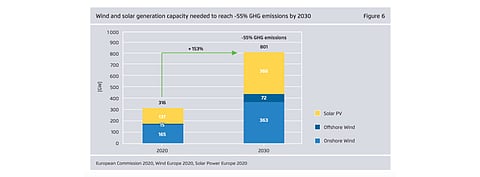

As Europe moves forward to meet its target to become a climate neutral continent by 2050, it will need to rely on renewable hydrogen as a climate-neutral alternative to decarbonize its industries. Going forward, as demand for renewable hydrogen grows in the future 'even beyond the current demand for fossil hydrogen', it is crucial to 'drastically' lower its production costs in order to achieve climate neutrality.
This is the gist of a new report titled Making renewable hydrogen cost-competitive Policy instruments for supporting green H2, released by German think tank Agora Energiewende and consultancy Guidehouse. The report clearly states that renewable hydrogen production is economically uncompetitive today, and that even if CO2 prices reach €100 per ton to €200 per ton, without incentives from the government, renewable hydrogen will remain expensive vis-à-vis its counterparts from fossil fuels.
Analysts have recommended a set of key policy initiatives that, they believe, need to be acted upon quickly if Europe wants to catalyze the renewable hydrogen ramp-up.
They suggest renewable hydrogen be channeled into no-regret applications as steel, ammonia and basic chemical production in the industrial sector, long-haul aviation and maritime shipping, along with acting like storage for the power sector.
"Several policy instruments should be deployed in concert to achieve this aim – namely, carbon contracts for difference in industry; a quota for aviation; auctions to support combined heat and power plants; measures to encourage markets for decarbonized materials; and hydrogen supply contracts," reads the report. "These instruments will also need to be complemented by regulations that ensure sustainability, appropriate infrastructure investment, system integration, and rapid renewables growth."
One major cost for renewable hydrogen is related to electrolyzers. They believe while economies of scale and technological improvements can bring down the costs, it would need to be stimulated through a stable and predictable hydrogen demand.
A strong demand for renewable hydrogen, as anticipated, will need to be supported by a strong growth of renewables At the end of 2020, European Union (EU) had an aggregate installed solar PV, offshore and onshore wind added up to 316 GW, it is required to grow by more than 150% and reach 801 GW by 2030, and reduce GHG emissions by 55% relative to 1990, with solar PV's share expected to grow from 137 GW in 2020 to 366 GW in 2030.
"Hydrogen ambitions beyond the COM Impact Assessment may even require greater renewable energy expansion," the analysts stressed.
Complete report is available on Agora Energiewende's website.
